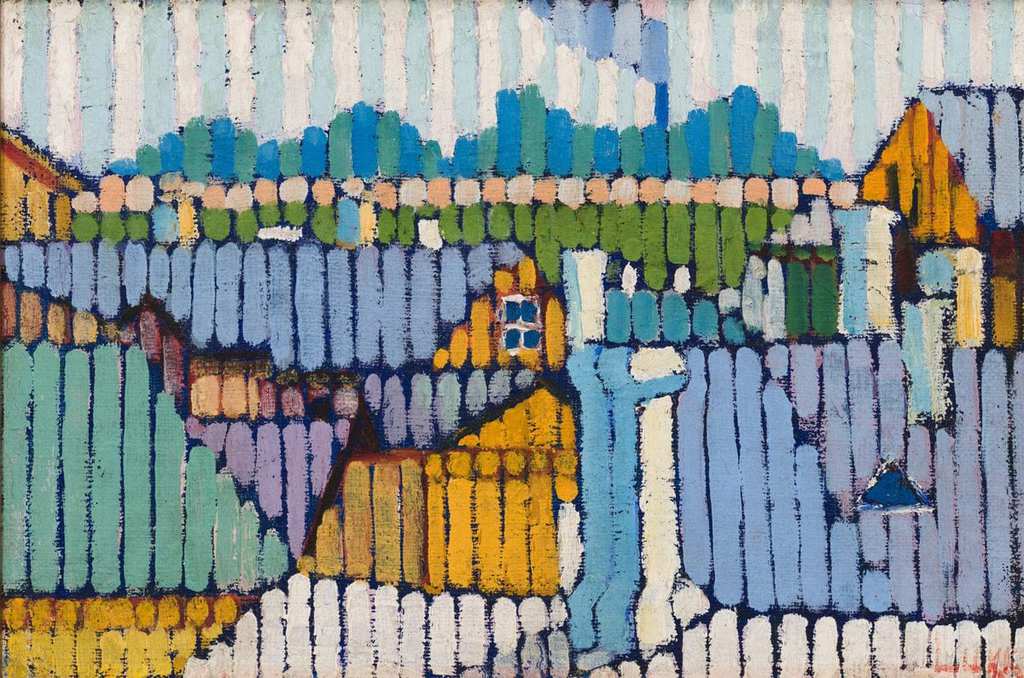
City motifs are not rare in Estonian art and strangely enough, such roof landscapes are also quite widespread. Throughout the 20th century, fields of roofs extending into the distance like the sea are painted time and again. Views of the roofs of Tallinn’s Old Town are especially widespread, of course, and one of the reasons for this is the conditions of everyday life: views from the Tallinn Art Hall, which was built to provide studios for artists, opened up precisely on the so-called upper layer of the Old Town. It is difficult to explain the attraction to roofs by way of meaningful reasons. Roofs are more likely pure and free of meaning, since as a rule, roofs are not meant to be looked at. Cityscapes focus on houses and milieus, architecture and buildings, atmosphere and mood, yet roofs do not offer all this. The roof is a non-place, so to speak: an empty place without meaning that only has a function – to cover a house.
Yet perhaps this is exactly what has had such an inspiring effect on artists, because when certain visual rhythms or structures in front of you are not burdened with all manner of meanings and poetic subplots, some kind of order can open up for an artist. By depicting this order, it is also possible get closer to the cool mathematical truth. Herbert Lukk has admittedly turned his attention primarily to colours here as well, but the strict order in which they are depicted, and their rhythms divided up into strips create the impression that the author has not aspired towards flirting with the viewers. His wish is not to manipulate with the viewer’s feelings, but rather to express the world’s inner structures, perceptible repetitions and transitions, and to make all of this visible by way of geometrical landscapes. Thereby the painting approaches abstractionism and cubism simultaneously, being quite close to depicting nothing. The only clearly recognisable motifs are chimneys and a little attic window, all the rest is mathematics.